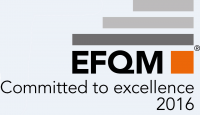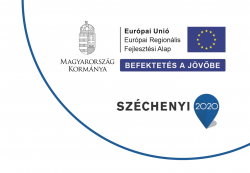General Paediatric Curriculum
By the end of 6th year, the medical student should be able to:
1) History taking & communication
Demonstrate the ability to (due to the language barrier all these tasks are expected to be done with help of translator and/or in theory):
- Take an age- and developmentally-appropriate history
- Explain common and important medical conditions to a parent/carer
- Explain common procedures and investigations
- Obtain consent for common procedures eg. venepuncture
Demonstrate the ability to:
- Present clinical findings verbally
- Give a verbal handover
- Construct and interpret a family tree
2) Examination
Demonstrate in any child or young person the ability to:
- Measure vital signs (including heart rate, respiratory rate, oxygen saturation, temperature)
- Perform an examination (to include respiratory, cardiovascular, gastrointestinal, central and peripheral nervous system, musculoskeletal, skin, eyes, ears/nose/throat)
- Plot and interpret a growth chart
Demonstrate the ability to:
- Hold and undress a baby
- Perform a newborn examination
- Perform a developmental examination in a child under 5 years
3) Recognition and management of the sick child
- Prioritise the care of a sick child
- Use a systematic approach (ABCDE) to the care of a sick child
- Demonstrate basic airway management (including appropriate airway positioning, bag-valve mask ventilation)
- Deliver age-appropriate cardio-pulmonary resuscitation (pBLS)
- Recognise the need for help and identify how to obtain it
4) Common and/or serious presentations
Identify in a range of contexts (primary care, acute care, outpatients) the:
- Key points in the history
- Key examination findings
- Red flags
- Differential diagnosis
- Initial investigations
- Initial clinical management
of/for the following clinical presentations:
|
General |
Respiratory/ |
GI/ Hepatic/ |
Neurological |
Dermatological |
Neonatal/ |
|
Fever |
Breathing difficulty |
Abdominal pain Vomiting |
Seizure(s) Reduced consciousness |
Rash |
Feeding difficulty |
Demonstrate for the above presentations the ability to:
- Identify the clinical presentation
- Make an initial assessment of the child
- Initiate basic management
- Seek help as appropriate
5) Pharmacology/Drugs in Paediatrics
- Explain prescription by weight, age and body surface area in children
- Outline the differences in drug metabolism between infants, children and adults
- Be familiar with special routes of drug administration in children e.g. inhalation with babyhaler, suppository etc.
- Be able to calculate (with given doses):
o Intravenous fluids (bolus and maintenance)
o Common analgesics
o Common antibiotics
o Oral rehydration solution
o Common asthma medications (eg. beta-2 agonists, steroids)
o Common emergency drugs (eg. adrenaline for anaphylaxis)
6) Practical procedures/investigations
- Identify the common challenges of undertaking practical procedures in children
- Outline the need to justify practical procedures in children
- Interpret common laboratory tests in children
- Interpret blood gases in children
- Interpret chest radiographs in children
7) Normal events, growth & development
- Outline the physiological influences on normal growth in childhood
- Identify the main physiological changes from birth to adulthood
- Outline normal feeding and eating behaviour from birth to adulthood
- Describe the main developmental milestones of children 0-5 years
- Outline the principles of the childhood immunisation programme in Hungary
8) Safeguarding
- List the risk factors for child maltreatment
- Define the main types of child maltreatment
- Describe the symptoms, signs and red flags of child maltreatment
- Identify the procedure for raising concerns about child maltreatment
9) Attitudes/behaviours
General principles of child health for medical students:
- Children are not scary
- Children are different from adults
- Child health and welfare is important for all doctors
- Multiprofessional team working is a vital component of child health practice
Adopt an approach to children, young people and families which:
- is developmentally appropriate
- is empathetic and holistic
- is non-judgemental and open minded
- empowers children, young people and families and works collaboratively with them
- shows an understanding of the impact of illness, disease and disability on children, families and their community as well as on friendships, social development and education
- recognises the importance of family in a child’s health, growth and development
- shows a willingness to listen to children, young people and their families and take their concerns seriously
Adopt an approach to colleagues which demonstrates:
- respect for the multiprofessional team in child health
- willingness to work constructively as part of a multiprofessional team
- willingness to share skills and ideas with others
Adopted from „Undergraduate Curriculum UK” and modified for local use




